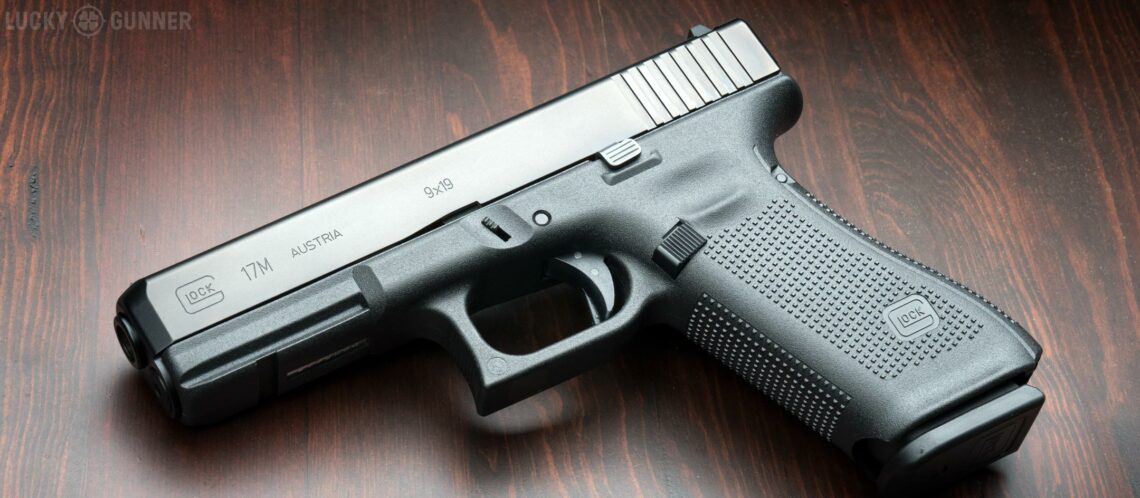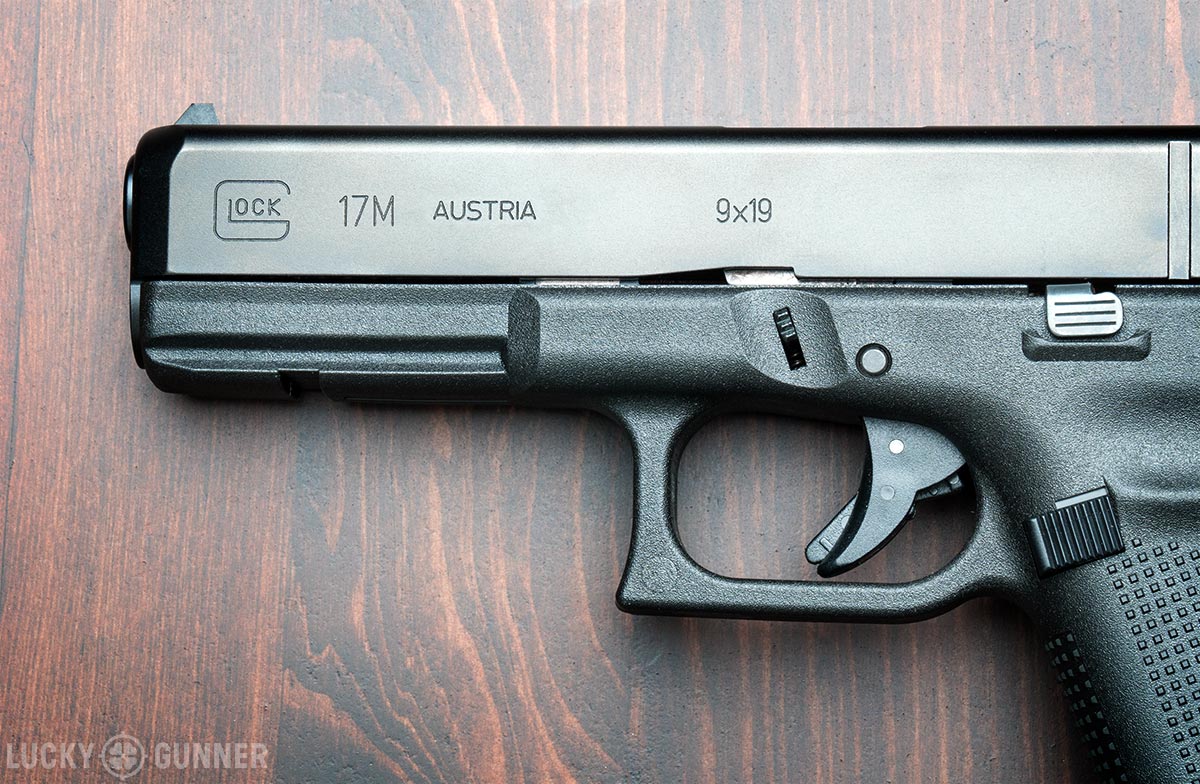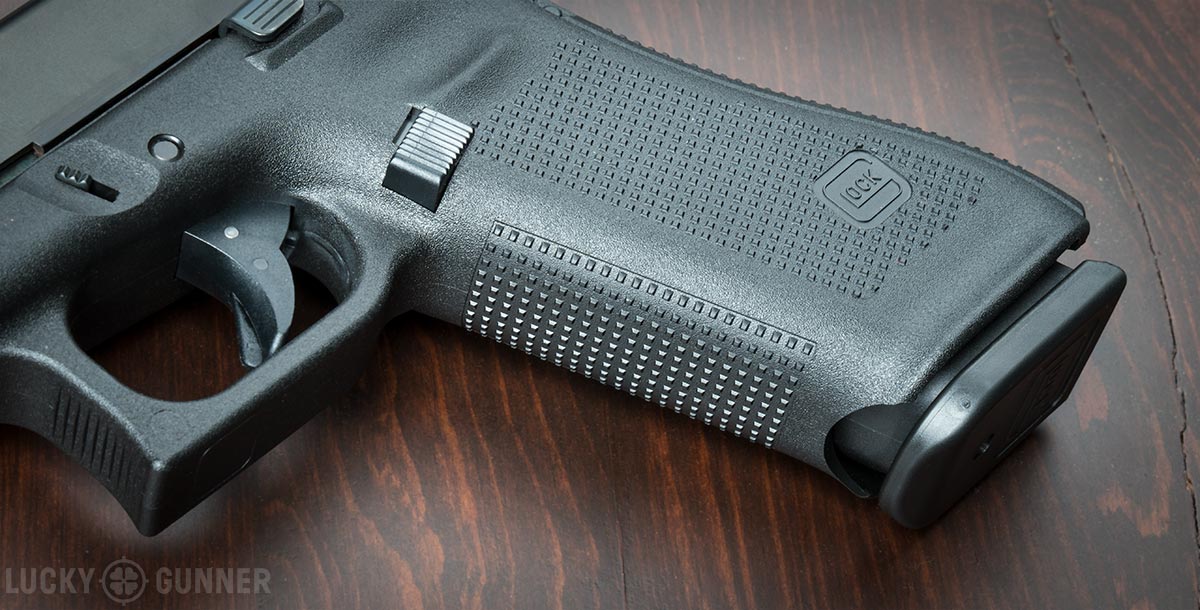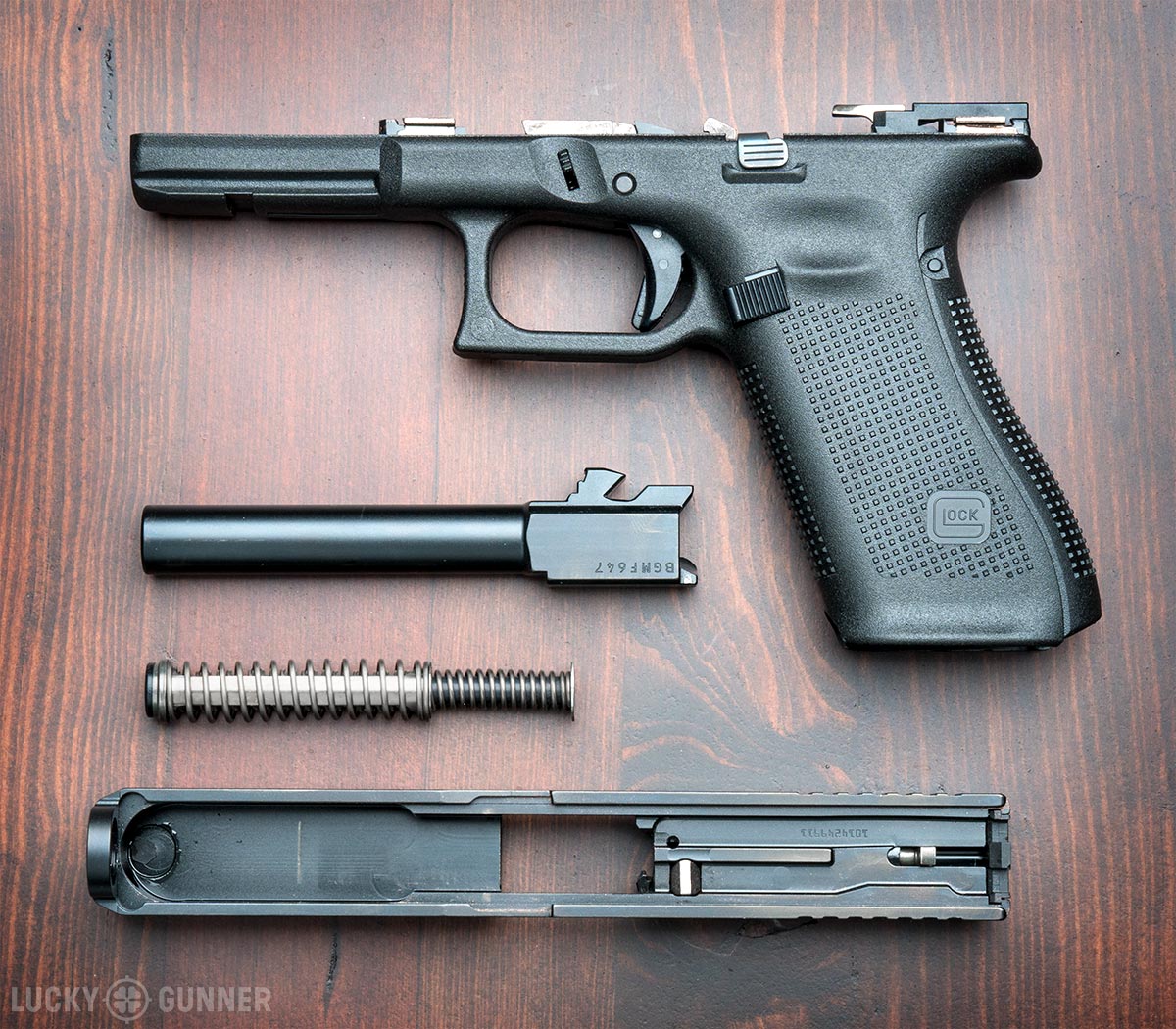Though the polymer striker fired pistol concept did not originate with Glock, they were the company that brought it to the mainstream with great success. Since then, they have ascribed to an “evolution, not revolution” design philosophy. Each new generation has minor changes and tweaks, but the core concept has remained the same. I was recently issued a new Glock 17M by my department. The 17M is the newest iteration of the very successful duty-sized 9mm Glock and identical to the commercial version of the pistol — the Glock 17 Gen 5. I’ve found that, though Glock has stayed true to their design philosophy, the changes they have made are actual improvements and not just cosmetic alterations.
Before moving forward, I should share a brief history of my involvement with Glocks. Prior to LEO training, I had never even held a polymer pistol, let alone fired one. In the military, the only pistol I had used was the Beretta M9. As a cake-eating civilian during the Clinton Assault Weapon Ban years — when magazines holding more than 10 rounds became…pricey — I carried a 1911 or revolver, but the 1911 was the platform I had the most experience with by far. Then came the police academy, where I was issued a Gen 2 Glock 22 with the NY-1 trigger. It was so gritty and oddly stacked, I thought something was wrong inside of the gun and embarrassed myself by telling an instructor I thought my gun needed maintenance. He took it, shot it, and told me that’s what they are supposed to feel like. Not a great start.
I’ve since been issued a Gen 3, and then a Gen 4 Glock 22 with the standard trigger. I prefer the Gen 2 in most ways since the Gen 3 and 4 finger grooves don’t line up with my fingers, but either way, I have never felt fully comfortable with the Glock in general. I suppose you could say I’ve always liked the concept of the Glock but not the execution. I appreciate the simplicity of the weapon, and I appreciate the idea of a backup gun that can accept the same magazines as a primary sidearm. The cost is reasonable, and the reliability and ease of maintenance make them an easy gun to own. I just didn’t shoot the Glock 22 as well as the Sig P226 and the P226 didn’t give me blisters, so when given the option, I elected to carry the Sig.
So with the understanding that I’m neither a “fanboy” or “hater”, let’s delve into the actual review of the 17M.
A magazine-fed pistol isn’t much good without the magazines, and there are some changes to the new Gen 5 mags that came with my 17M. The most obvious is that the Gen 5 magazines have an orange follower. I’m not sure the advantage of a high visibility follower in a pistol magazine, but it does make it easier to differentiate Gen 5 mags from older magazines at a glance. Note that previous generation magazines do function just fine in the Gen 5 pistols, except for those that were made before the implementation of the swappable magazine release, which will not work with a left-handed setup. The magazine body does not appear to be changed, and capacity is still 17 rounds.
The more functional difference is a slightly longer base pad, which, when combined with a cut out in the front of the pistol grip, makes it easier to rip out a stuck magazine. The witness holes are accurate and all three of my issued magazines function as expected.
On the pistol itself, the first thing I was excited about was the lack of finger grooves. For those of us who have hands that don’t match the grooves and who are prohibited by policy from modifying the gun, this makes a big difference. Not only is it more comfortable, it promotes a better and more confident grip. The texture of the grip is probably in most customers’ Goldilocks-zone for roughness, but it is my one complaint with the 17M. I would prefer a more aggressive texture since this one began to feel a little squirmy once it got sweaty. Of course, plenty of stippling options exist for those who want a rougher texture and aren’t bound by policy prohibiting such modification. The pistol comes with no back strap installed, but ships with four optional backstraps (two medium and two large backstraps, both with and without a beavertail). The holder for the straps doubles as a tool to remove and install the pin.
Looking at the bottom of the grip, you’ll notice not only the aforementioned cut out for removal of stuck magazines but also a slightly flared magazine well to help with faster reloads. The “funnel” of the magazine well makes it more forgiving of a slightly misaligned magazine, allowing it to slide home instead of sticking.
Sights are always a bit personal, but I do like the Ameriglo sights that came with my 17M quite a bit. They are slightly smaller than the Trijicon HDs I’ve used in the past and feature a big orange dot up front with a black rear, and three tritium inserts for low light shooting. I shot the 17M in lighting conditions from daylight to nearly complete darkness and did not find any situation in which sights were difficult to acquire. Either the orange or the tritium is always visible, and sometimes you can see a bit of both. The Ameriglo sights are just one of three factory sight options available for the Gen 5 Glock 17. The pistol can also be purchased with plain three-dot night sights, or the standard Glock plastic OEM sights.
When using the Ameriglo sights, the light gaps on either side of the front sight are wider than “normal” Glock sights. This can make accuracy work a bit more challenging, but the trade-off is very rapid sight acquisition. When I first received this pistol, the rear sight was not quite centered, causing the gun to shoot about one inch left at 10 yards. After having a friend shoot the gun to confirm that the problem was a sight issue and not operator error, I drifted the rear sight and it now consistently shoots to point of aim.
The 17M is capable of better accuracy than I’ve been able to get from it so far. In controlled testing from a mechanical rest, these guns are capable of sub 2-inch groups at 25 yards. Several examples were under 1 inch at 25 yards using factory 147-grain bullets, with the best example I’m aware of shooting .76 inches. That’s pretty impressive for a general issue handgun, and well within the accuracy requirements for a service pistol. While understanding the “why” of the increased accuracy is really beyond my skill set, I was told that the new “Glock Marksman Barrel” includes improvements to lockup consistency as well as changes to the rifling which have lead to this increased accuracy.
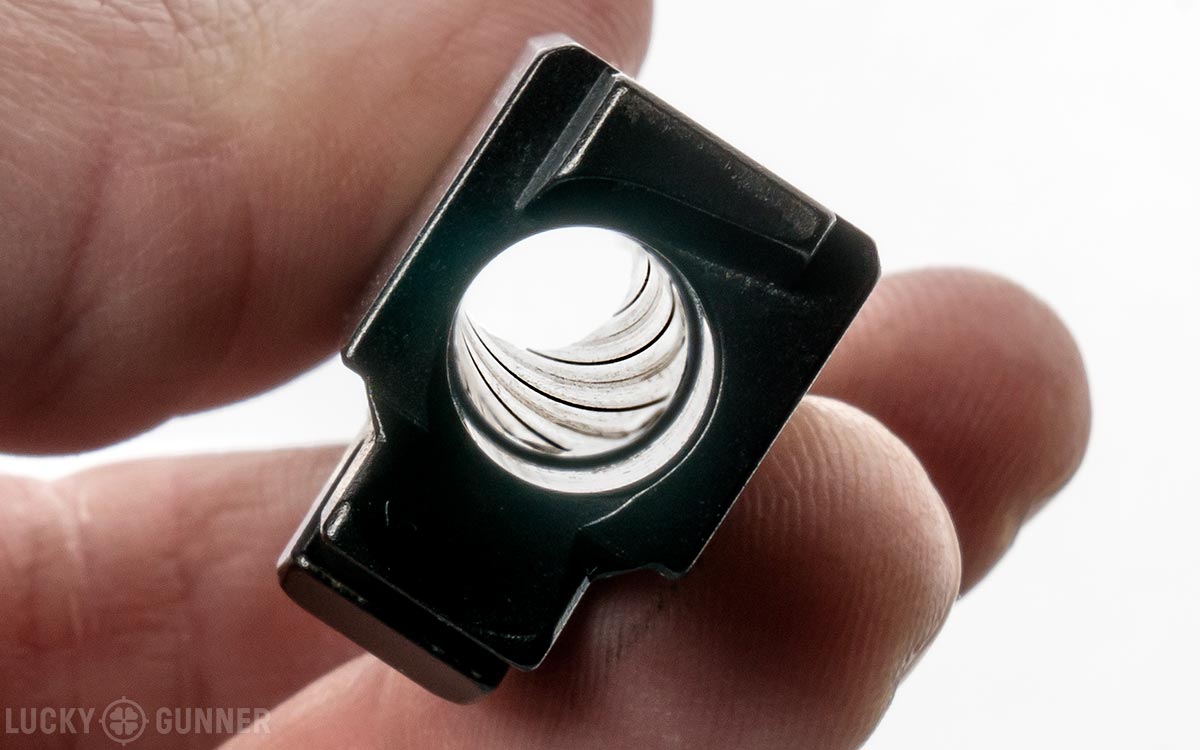
The trigger is very smooth — a world of difference from the grit and grind of my old Gen 2 and an improvement even on the decent trigger of the Gen 4. It feels similar to a Robar NP3 coated trigger — there’s no grit, giving the sense that the parts are gliding when they touch, not scraping. The trigger is so good I had to go back and dry fire it to really concentrate on the feel and do my best to describe it. A pull of the trigger starts with smooth take-up of pre-travel, a bit of stacking as you near the break, a predictable break, and then ends with a clean reset. It does what it’s supposed to do so well you don’t really have to think about what it’s doing, it’s simply invisible. While “acceptable” is my normal adjective for a factory Glock trigger, the 17M’s trigger is actually quite good. A friend of mine who is a Glock armorer capable of performing a very nice aftermarket trigger job on them fired my 17M and immediately pronounced it the best factory trigger he had ever felt on a Glock. Our levels of experience with different Glocks are at opposite ends of the spectrum, so when we both agree, I think it’s safe to say you’ll like the new trigger.
Of course, the latest Glock design retains the trigger tab, an integral part of keeping the Glock “Safe Action” design drop safe. Since the tab moves in a different plane than the trigger, a drop cannot exert enough inertia on both to allow the trigger to move to the rear. The only change I can see to any component of the “Safe Action” is the firing pin safety plunger. It is now wedge-shaped and larger.
Other differences in the slide assembly are a beefier tab for the recoil spring assembly, and the recoil assembly spring itself is longer. While the 9mm isn’t known as a heavy recoiling round to begin with, the Glock RSA does a very good job of reducing felt recoil. I found recoil management and tracking the front sight to be easy with the 17M. Even when it felt slippery with sweat, it wasn’t difficult to control and maintain a firm grip.
On the outside, the Gen 5 slide is slightly chamfered on the muzzle end. While some claim this makes it easier to holster, I’m not sure I buy that, particularly because the frame lacks the same chamfer. It does make an interesting cosmetic change, though — a break in the normal slab sides. I know there had been some speculation about the possibility of Glock adding forward cocking serrations to their newest design update, but they are absent on both my 17M and the commercial Gen 5. How much of a benefit they would be is debatable, particularly without an optic mounted, but I wouldn’t mind having some texture on the forward area of the slide. It’s certainly not a deal breaker for me one way or the other, though.
Like the Gen 3 and 4 Glocks, the 17M has an accessory rail on the frame, and I have fired 250 rounds with a Streamlight TLR-1 attached. Having the light installed did not cause any malfunctions. We did have issues with some Gen 3s that malfunctioned only when a WML was installed, so I always test this even though I no longer use a WML day-to-day.
To date, I’ve fired 2,459 rounds through the 17M. The first 250 were straight out of the box as delivered. I then field stripped it, cleaned it, and re-lubricated it. I have had zero malfunctions of any kind, with or without the WML, with the issued magazines and with Gen 4 magazines. I even attempted to induce a malfunction via “limp wristing” to the point I held the pistol with only my forefinger and thumb of my right hand and pulled the trigger with my left finger, and still couldn’t get it to malfunction.
Most existing Glock 17 holsters seem to be compatible with the 17M and Gen 5 Glocks. I did observe one officer with an unknown brand of Kydex holster that was not compatible, as the sides of the Kydex came up high enough to interfere with the ambidextrous slide release. My Comp-Tac IWB, leather OWB, and kydex Safariland duty holster were all compatible. If your holster doesn’t cover the ambi slide release and it has enough height in the sight tunnel to accommodate a slightly taller sight, you shouldn’t have any issue.
In summary, it’s still the same pistol that put Glock on the map, but through careful and well thought out updates, it’s the best example of a Glock to date. No matter if you love, hate, or are indifferent to the Glock, it’s impossible to deny that it’s the pistol that all polymer framed striker-fired guns are compared to. With the 17M now available to the public as the Glock 17 Gen 5, all of those pistols attempting to claim the “Glock killer” title have an even higher standard to meet.
